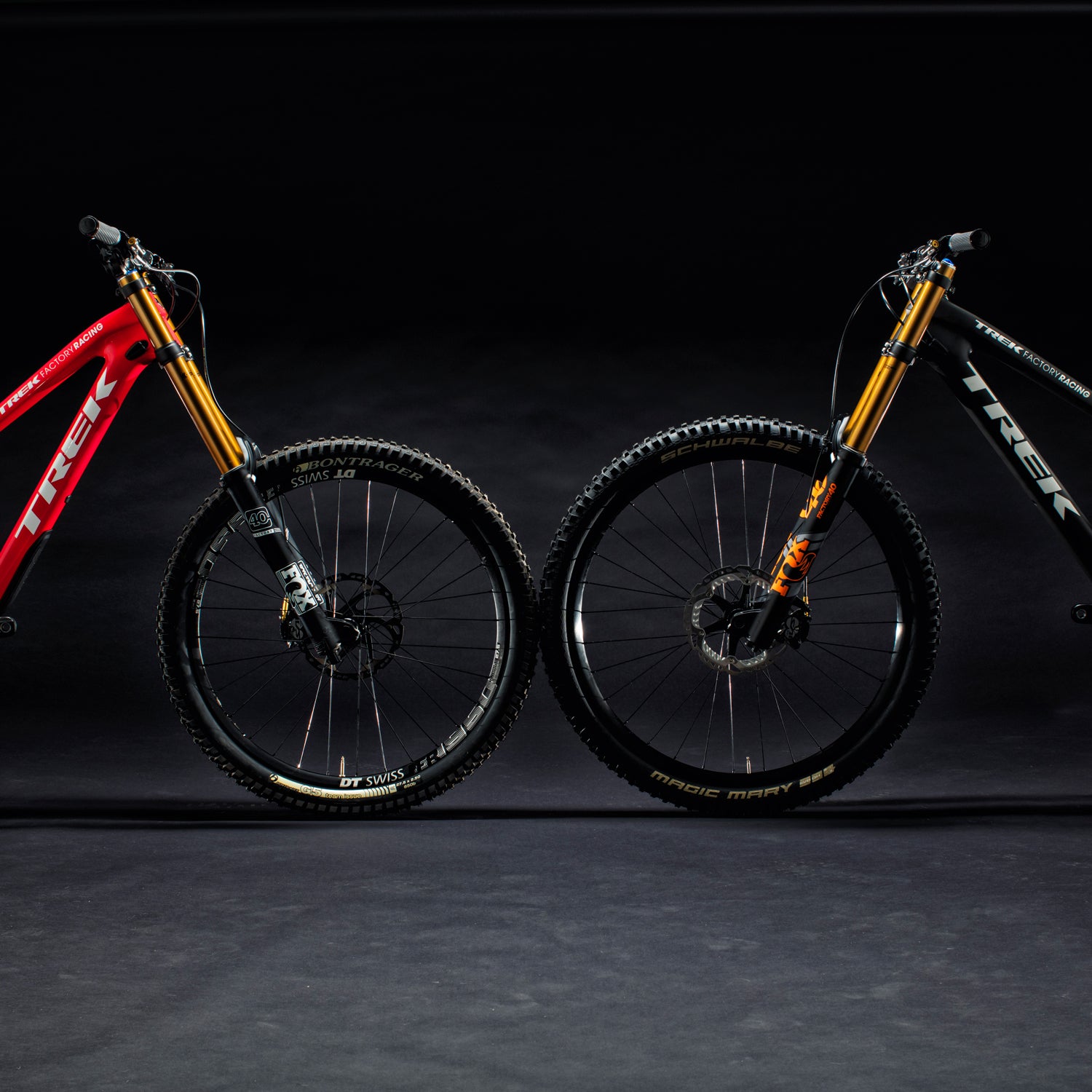Despite plenty of testing and even a that has shown 29er mountain bikes to be faster in cross-country races, diehard proponents of 26, and later 27.5, always cited the downhill market’s preference for smaller wheels as validation that slighter hoops were faster and more nimble when descending. But now two of the most influential brands on the market are upending that logic as they shift their DH team models from 27.5 to 29.
Today, Trek announced the new , a 170-millimeter carbon fiber DH rig that World Cup sibling champs Gee, Rachel, and Dan Atherton will race for the coming season. Trek first showed a 29er edition of the Session in 2009. They knew it was fast back then, but decided that the complementary parts weren’t yet ready to bring the concept to market. Even now, they allow that 90 percent of riders will gravitate to the 27.5-inch version of the Session. However, Trek says that those who “race the clock” will be best served by the bigger hoops. Rachel Atherton the first stop of this year’s World Cup series aboard the new Session 27.5, proving the platform’s cred, and she will switch up to the 29er after the bike’s official launch this week.
Meanwhile, Santa Cruz announced late last month that its Syndicate team will race on a new of the V10, with between 190 and 210 millimeters of travel. The bike will still be available in 27.5, but the company’s three pros will ride the 29er, as testing has proved it to be the quicker bike. (Racers will also have access to the 27.5-inch V10 if they prefer it for a given course or race.) In describing their decision to make the bike, Santa Cruz wrote, “Tracks are faster, times are tighter, and eking another second out of a four-minute track can be the difference between a World Cup win and missing the podium entirely.” The 29er V10 is available to the public, but Santa Cruz admits that, given the newness of the size, it’s unclear whether many people will embrace the machine or stick with the more conventional 27.5.
The switch to 29 wasn’t unequivocal. Team racer Loris Vergier didn’t immediately take to the size but was won over by the numbers. “I felt like the 29er was slower. The clocks don’t lie though, and I was consistently posting quicker times on the new bike compared with the old—and this was on my local track!” Vergier said. “That's when I realized the new bike was deceptively quick.”
I take a small bit of satisfaction in knowing that Santa Cruz’s switch to 29 began with the blazing Hightower, my hands-down favorite mountain bike of 2016. After Syndicate racer Greg Minaar, one of the winningest racers in downhill history, rode the Hightower 29 at the Enduro World Series in Finale Ligure, Italy, in October 2016, he insisted that Santa Cruz revisit the idea of a big-wheeled V10, which the company had explored but never brought to market, just like Trek. “It just held so much speed,” the South African racer said of the 29er Hightower.
Part of the credit for the shift should also be given to technological developments in wheels, tires, forks, and shocks. Enve, for example, is building its incredibly durable carbon expressly for downhill racing, and these hoops are lighter and stiffer than what most people ride on their road bikes. Dual-crown forks like the are making it possible to build bikes that are supple, light, and present no handicap over smaller sizes. “Thanks to everyone’s ability to move quickly on product development, we were able to go from frame concept to race-ready bike over just a couple months, with a few weeks left over for final testing,” says Nick Anderson, head engineer at Santa Cruz.
It wasn’t until Jaroslav Kulhavy captured the first cross-country World Cup aboard a 29er in 2011 that people truly began believing in the platform’s speed. Final proof of 29er’s dominance will come when a racer wins a World Cup downhill event aboard one of these big-wheeled bikes. With high-end downhill development shifting to 29ers, that seems only a matter of time.


